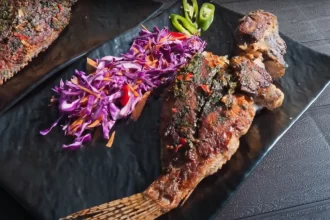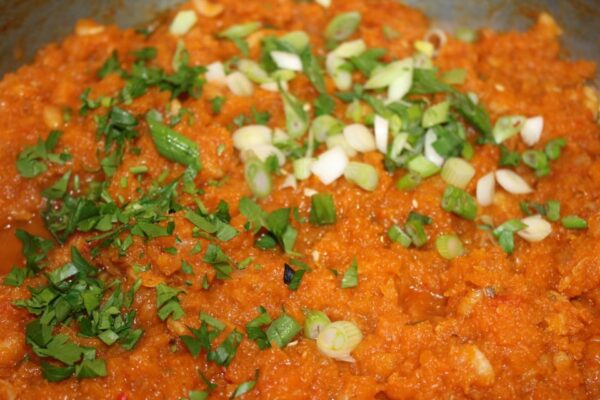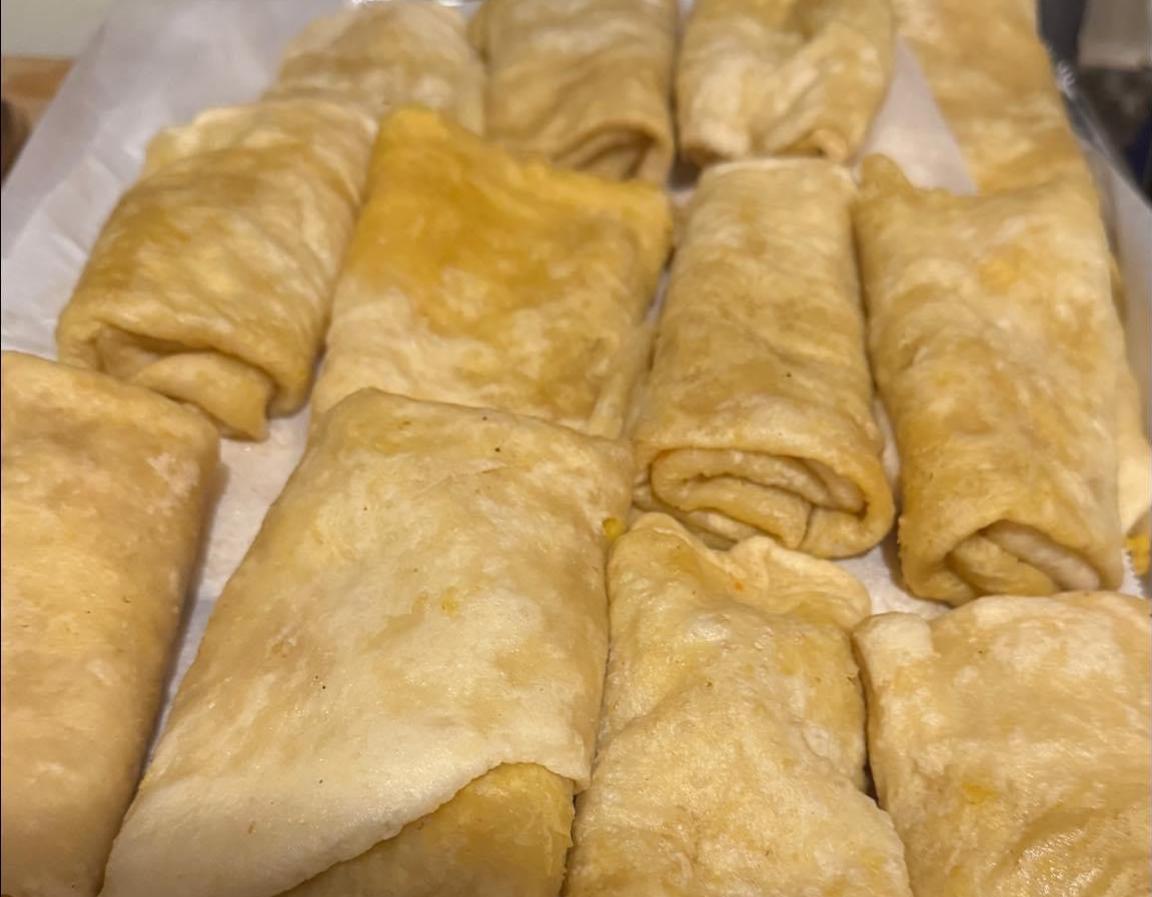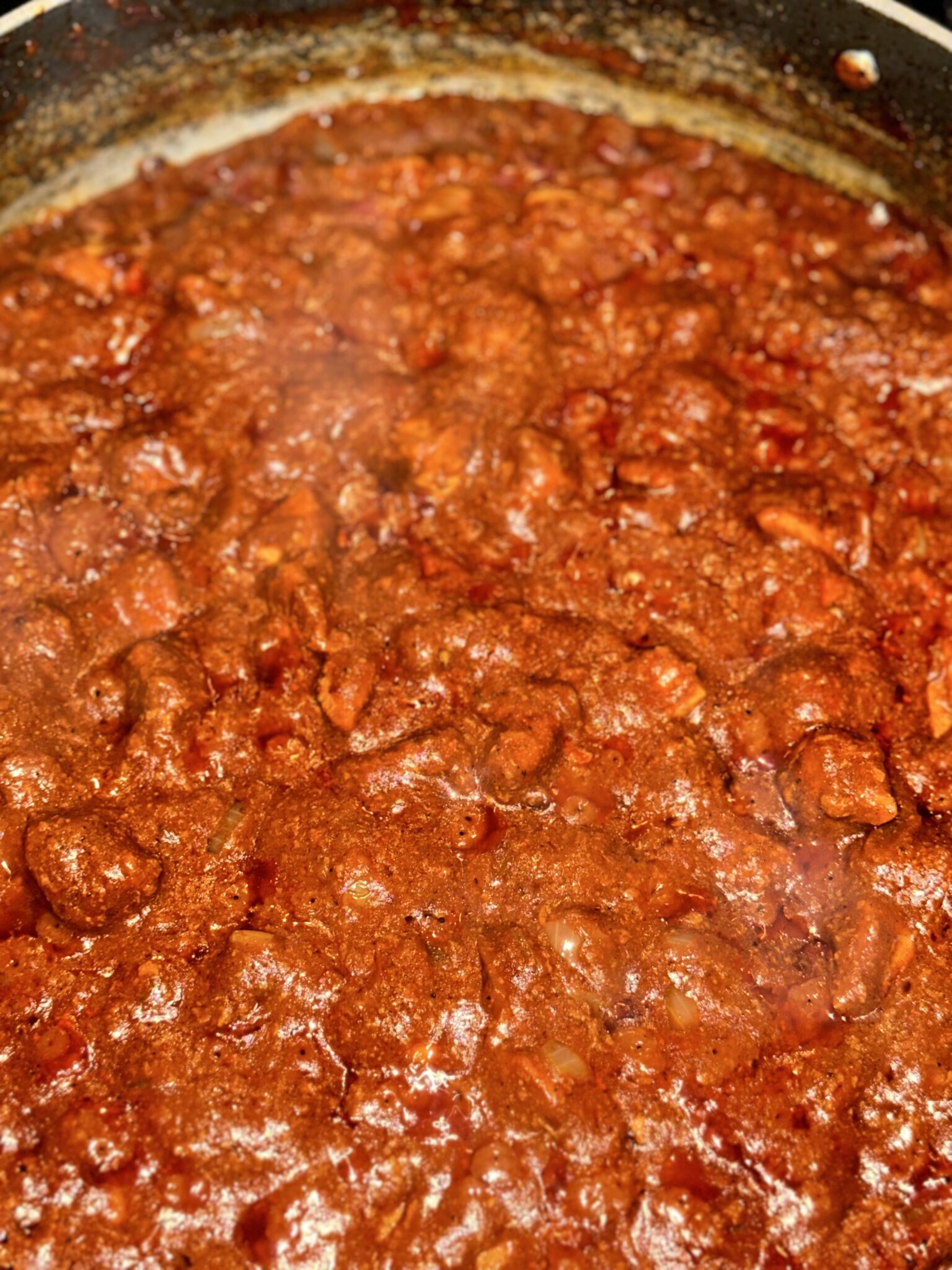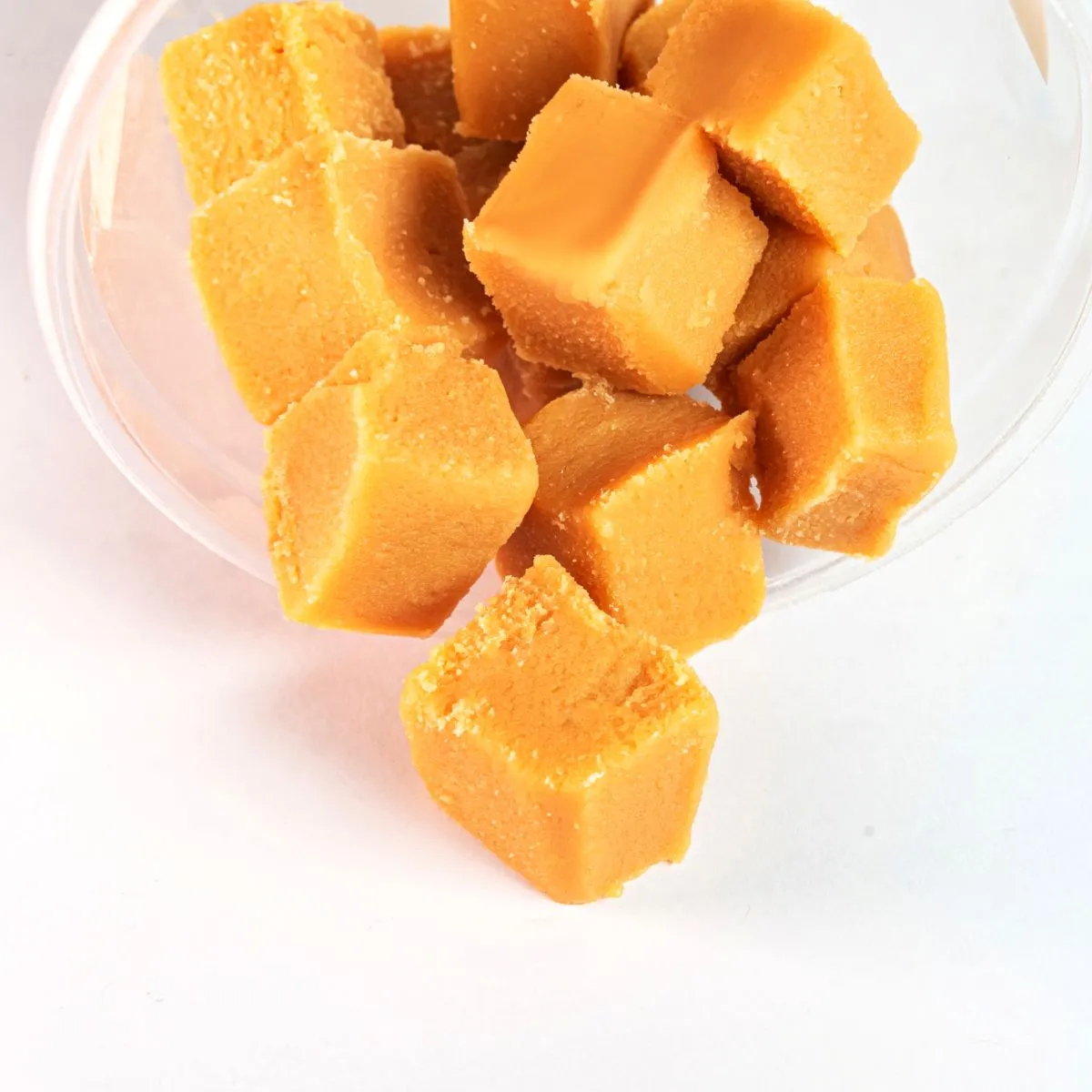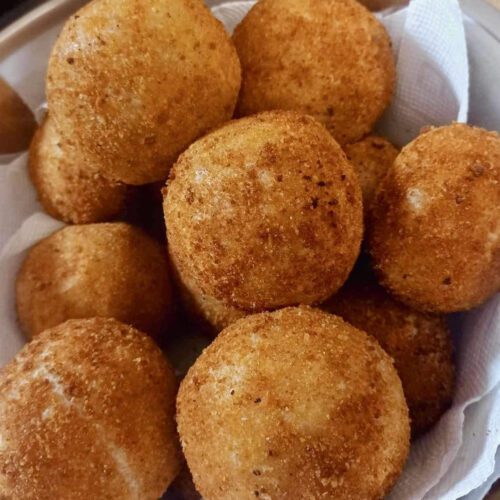
Cassava Egg balls
Egg Ball, a flavorful dish where hard-boiled eggs are encased in seasoned cassava (also known as yucca). Served with a side of spicy mango sour or chutney, this unique treat is expertly prepared, and when cut in half, unveils a perfectly cooked egg for a satisfying morning meal.
Equipment
Ingredients
- Cassava Yuca: 2 lbs, peeled and chopped.
- 5 hard-boiled eggs
- Salt: 1 teaspoon or to taste
- Water: Enough to cover the cassava for boiling
- Oil for frying: Vegetable or Canola
- Optional: Egg yolk and breadcrumbs
For added flavor:
- 1 teaspoon of butter
- 2 minced garlic
- 1 teaspoon of ground cumin geera powder
- ½ teaspoon of black pepper
- ½ teaspoon of ginger powder
- Fresh pepper: season or wiri pepper of your choice.
- Fresh herbs: thyme and green onions finely chopped.
Instructions
- Start by peeling and chopping 2 pounds of cassava (yuca) into manageable chunks. It’s important to remove both the outer brown layer and the thick inner skin when peeling.
- Place the cassava chunks in a large pot and add enough water to cover them. Season the water with 1 teaspoon of salt or adjust it to your taste preferences.
- Bring the water to a boil, then reduce the heat to a simmer. Allow the cassava to cook until it becomes tender, which usually takes around 20–30 minutes. To check if it’s done, you can insert a fork into a chunk of cassava; it should easily pierce through.
- After cooking the cassava, strain it and allow it to drain thoroughly, ensuring all excess water is removed. Then enhance its flavor by adding the above-flavored ingredients, such as butter, minced garlic, etc., while the cassava is still hot, allowing them to melt and distribute evenly. For extra aroma and flavor, s sprinkle fresh herbs (thyme and green onions) on top.
- Once the cassava is fully flavored, you can proceed to mash it. Use a fork or a potato masher to achieve a smooth consistency. If you didn’t remove the fibrous core before boiling, now is the time to do so. It’s typically firmer and more noticeable than the rest of the cassava, making it easy to remove.
- To form cassava egg balls, start by taking a portion of the mashed cassava and flattening it in your palm. Then, carefully place a hard-boiled egg in the center of the flattened cassava. Proceed to wrap the cassava around the egg, rolling it between your palms gently until the egg is fully covered and a smooth ball shape is formed. To add crunch and texture during frying, you can coat the cassava egg ball with egg. Start by dipping the ball into the beaten egg yolk, making sure it is fully covered. After that, roll the ball in breadcrumbs, ensuring an even coating. This combination of egg yolk and breadcrumbs on the outside will result in a delightful and crispy texture when you fry the cassava egg balls.
- Heat enough oil in a deep, heavy-bottomed pot or fryer. The oil should be sufficient to fully submerge the cassava egg balls. Aim for a temperature of around 350°F to 375°F (175°C to 190°C) for frying. If you don’t have a thermometer, you can test the oil by dropping a small piece of cassava dough into it; it should sizzle and quickly rise to the surface without burning.
- While the oil is heating, prepare a plate lined with paper towels. This will be used to drain any excess oil from the fried cassava egg balls.
- Once the oil reaches the desired temperature, carefully lower the cassava egg balls into the pot, ensuring not to overcrowd it. Fry them in batches, if necessary, as overcrowding can cause uneven cooking and reduce the oil temperature.
- Fry the cassava egg balls until they turn a golden-brown color and become crispy. This usually takes approximately 5–7 minutes. Use a slotted spoon or tongs to turn the balls occasionally, ensuring they brown evenly on all sides.
- Once the cassava egg balls are perfectly fried, remove them from the oil. Allow any excess oil to drain by placing it on the prepared plate lined with paper towels.
Notes
Serve the cassava egg balls while they are still hot and crispy. They can be enjoyed on their own or paired with a dipping sauce of your choice, such as tangy tamarind, cucumber or mango sauce, or a spicy pepper sauce.
The nutritional values provided in this recipe are estimates and may vary based on specific ingredients used and portion sizes. Each recipe includes estimated cook time and serving sizes for your convenience. Actual values may vary depending on the specific ingredients and brands used, portion sizes, and individual cooking methods. This information is not intended to provide medical or nutritional advice, and we recommend consulting with a qualified healthcare professional or nutritionist for specific dietary needs.
Nutrition
Calories: 223kcalCarbohydrates: 4gProtein: 16gFat: 16gSaturated Fat: 5gPolyunsaturated Fat: 2gMonounsaturated Fat: 6gTrans Fat: 0.1gCholesterol: 472mgSodium: 1336mgPotassium: 201mgFiber: 0.4gSugar: 1gVitamin A: 728IUVitamin C: 1mgCalcium: 81mgIron: 2mg
Tried this recipe?Let us know how it was!





